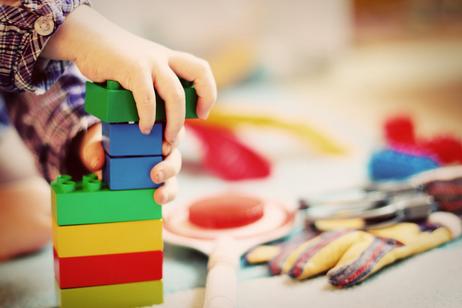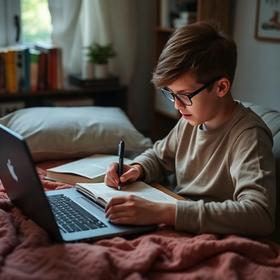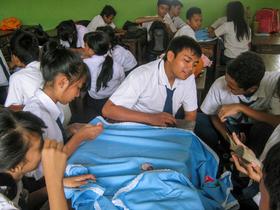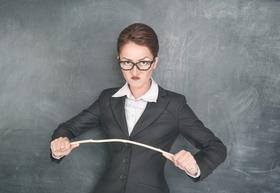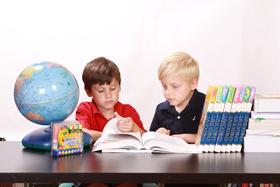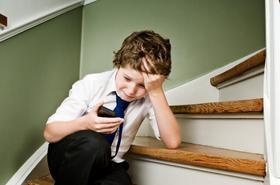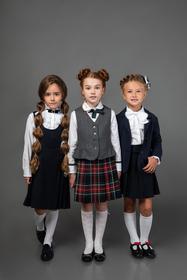Just a few months after the dawn of a new decade, millions of parents found themselves scrambling to adjust to remote learning in the midst of a rapidly spreading global pandemic. It didn’t take long for parents to realize just how much they’d been leaning on the public school system until their kids were at home full-time. Parents became teachers overnight, struggling to maintain some sense of normalcy in regard to their child’s education, all while trying to manage changes in their own day-to-day lives.
A full year later, parents and educators are still struggling, and the country is facing some difficult questions about the state of America’s public school system. In some cities, affluent families have abandoned the public school system in favor of private schools but what effect with this mass exodus have on the future of public schooling? In this article, we’ll explore the ways the pandemic has changed public school systems and what parents can expect in the future.
The Current State of Public Education
After months of remote learning, many schools have started to return to in-person education. Though many schools are following a blended approach, teaching students both in-person and virtually, parents are finally starting to see a return to “normal” after a year of chaos. What school really looks like for students varies, however, depending on a variety of factors.
In some communities, schools are only open to teachers and administrators who continue to teach remotely. Other districts have opened their doors to students but continue to enforce mask mandates and social distancing rules. Many schools have combined in-person learning with remote instruction and the results are mixed. Everyone is doing the best they can, but experts agree that the state of the American public education system has changed and it may take years for us to fully understand the ways in which it has changed and how to adjust to the changes to provide for public school students.
Researchers from the Center on Reinventing Public Education put together a report using data from school districts across the country to create a snapshot of what public education will look like in the fall of 2021. Here are some of the key findings:
- Nearly half the nation’s schools are planning to return to full in-person instruction this fall.
- Students in rural communities are more likely to have full-time in-person instruction than city and suburban students.
- Students in high-poverty districts are the most likely to begin the school year with remote learning.
Most school districts have developed a plan for how remote and in-person learning will look this coming fall, but plans are subject to change. Kristi Wilson, president of the American Association of School Administrators says she’s very concerned about safety. Educators can “make up for all kinds of disruptions… but what [they] can’t make up for is the critical mistake because [they] took an unnecessary risk with a child’s life or a teacher’s life.”
Out of an abundance of caution, many schools continued remote learning even after the CDC provided guidance for schools to reopen. Most of the final decisions, however, were left up to local parents and educators. In one poll, over 80% of parents expressed concerns about their children being exposed to COVID-19 at school yet the same percentage were concerned about their children missing school time.
Disparities in Public Education During the Pandemic
The state of public education has always varied dramatically from one city to another and between urban and suburban school districts. Over the past year, parents have been forced to make difficult decisions about their child’s education and alternative learning opportunities aren’t equally available. Many parents made the switch to homeschooling and many who could afford it hired private tutors. In many cases, homeschooling parents joined together to create learning pods.
Disparities in public education have long been a concern but the education community and policymakers alike are concerned that the pandemic may deepen those divides. West Virginia Senator Robert Plymale (D) says, “This pandemic could further divide our kids into the ‘haves’ and ‘have-nots’ if we aren’t careful.” It is a valid concern that inequities that existed before the pandemic will only get worse.
Last spring, in the early days of the pandemic, there was a rapidly growing divide between students who were able to easily make the transition to remote learning and those who could not. In districts with the resources to train their teachers to teach remotely and those that were able to provide laptops to students, children were able to continue their education more or less seamlessly. In districts with limited resources and those without current technology, teachers had to hand-deliver teaching materials to students and many students fell through the cracks.
The students who likely endured the most damage during the pandemic are those who were already struggling. Low-income students, students of color, students with disabilities, and English learners have likely endured the most harm academically. Many students have also suffered mentally, socially, and emotionally and it may take years to fully recover from the trauma.
Urban School Districts Face Heightened Challenges
Washington Mayor Muriel Bowser and DC Public Schools chancellor Lewis Ferebee have made a promise to their communities that schools will resume in-person education five days a week this coming fall for families who choose that option. As it stands, however, 87% of Washington fourth graders and 93% of eighth graders were still being taught remotely in March. For many parents who have already left the DC public school system, fall may be too long to wait.
Local parents like Elizabeth Walsh of Washington D.C., mother of three elementary-aged children, are concerned that public schools won’t survive the pandemic. Anecdotal evidence shows an increase in wealthy parents removing their children from public schools – in some cities, enrollment has declined by more than 30% in pre-K and early elementary. The desire for in-person education has led wealthier parents to seek private school options or to move out of the city into the suburbs to give their children better opportunities for education.
The problem with affluent parents taking their kids out of public school in urban districts is that it may financially handicap districts that have already suffered a decline in enrollment. This could further segregate students in cities where disparities in education and opportunity are already stark. The latest federal data shows that in large cities with populations over 250,000, only 42% of white fourth-grade students were learning remotely in March versus 58% of black students, 59% of Hispanic students, and 75% of Asian students. The disparity is even higher among eighth-grade students.
In some cases, discrepancies like these can be explained by limited capacity for in-person learning, staffing difficulties, and financial disparities. Transmission rates also tend to be higher in urban areas which leads families of color to choose remote education even when in-person learning is an option.
What to Expect in the Coming Year
With the COVID vaccine rollout in full effect and numerous states lifting mask mandates, the world is starting to return to normal. Though things may look a little more like they used to, however, don’t expect the public education system to simply bounce back. Black, Hispanic, and Asian students are still more likely to choose virtual learning when it is offered because their communities have been hit harder by the virus. To combat this, the CDC continues to disperse messaging that in-person schooling doesn’t increase community spread and more educators are speaking out in favor of in-person learning.
In urban districts, issues like aging facilities, higher transmission rates, spatial constraints, and limited financial resources will continue to be a stumbling block. Certain communities are also bracing for the spread of the B. 117 variant coming from the UK. What may be the biggest challenge, however, is lack of clear messaging from school districts themselves. Unless their school district can assure parents they will be open five days a week for in-person instruction in the fall, many parents are forced to explore alternative options.

